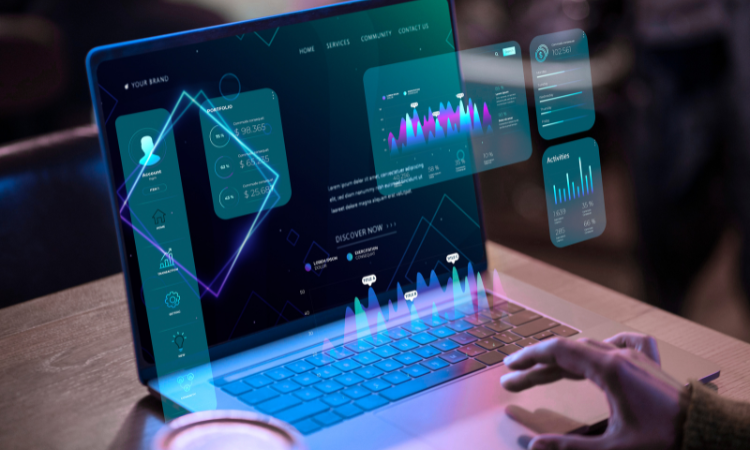Imagine this: you collect hundreds of customer comments every day. Your CX dashboard is overflowing with survey verbatims, chat transcripts, and app store reviews. You know there are insights buried in there somewhere — themes driving churn, frustrations causing NPS to tank — but your team is still combing through spreadsheets, tagging comments manually, and summarizing trends one line at a time.
By the time those insights make it into a report, the moment to act has already passed.
This isn’t a one-off story — it’s the reality for most CX teams today. According to our AI in Feedback Analytics 2025 report, 87% of CX leaders still rely on manual analysis of verbatim customer feedback. And the cost? Missed signals, slow responses, wasted resources, and, ultimately, customer dissatisfaction.
Unlock the AI in Feedback Analytics 2025 Research Report📈
Uncover how 100+ CX leaders are using AI in feedback analytics to pinpoint issues, improve NPS, and drive retention—turning customer insights into measurable growth.

The Growing Complexity of Feedback
Customer feedback today is everywhere:
- Surveys on products and services
- Chat transcripts from AI bots and agents
- Support tickets from helpdesk platforms
- Social media mentions and reviews across dozens of sites
- App store ratings and in-app forms
In most organizations, these signals are scattered across tools and teams. CX leaders in our research reported juggling data from 5 to 7 different platforms just to get a partial view of customer sentiment. As one of the CX leaders mentioned in our conversation that even though
This fragmentation forces teams into manual stitching — downloading survey exports, copying chat transcripts, consolidating tickets, and trying to piece together insights from disconnected systems. By the time it’s done, the customer has already moved on.
The Reality of Manual Feedback Analysis
For most organizations, “analysis” still means downloading survey responses, dumping them into Excel, and manually tagging each comment. Teams spend hours categorizing feedback into themes, highlighting sentiment, and stitching insights together across multiple tools — from surveys to helpdesk tickets to social reviews.
We analyze 150+ comments daily, but still don’t know what to do. There’s a lot of confusion, and nothing happens.
This fragmented, spreadsheet-heavy process is slow, resource-intensive, and error-prone. Even teams with dedicated analysts can take days or weeks to turn raw customer comments into insights. And by then, the opportunity to fix the issue — or delight the customer — has often disappeared.
The Hidden Costs of Staying Manual
Manual feedback analysis might seem manageable at first. But as customer expectations rise and data volumes surge, its limitations become a silent but severe drain on CX performance.
1. Delayed Insights → Missed Opportunities
In customer experience, timing is everything. Customers expect their feedback to drive change now, not weeks later. But manual workflows slow everything down:
- Analysts spend days tagging and sorting themes.
- Reports are generated after-the-fact, not in real time.
- Issues escalate while teams are still “analyzing.”
For example, one SaaS leader in our research shared how a product bug caused a spike in negative app store reviews. By the time their team identified the recurring theme manually, hundreds of 1-star ratings had already gone public. The opportunity wasn’t just missed — brand reputation took a hit.
2. Resource-Heavy, Low Impact
CX leaders today aren’t short on data; they’re short on actionable insights. Yet many teams are investing hundreds of hours per month into feedback tagging, only to produce static reports that rarely change customer experiences.
This resource drain comes at a cost:
- Analysts burn out under endless comment volumes.
- Decision-making slows down at every level.
- Budgets are consumed by low-value operational work instead of strategic CX initiatives.
Manual analysis doesn’t scale. And as feedback channels multiply, the gap between effort and impact widens.
3. Inconsistent, Biased Insights
Manual tagging relies on human interpretation. Two analysts reading the same comment might classify it differently — one tags it as “payment failure,” another as “checkout issue.” Over time, this introduces bias and inconsistency into CX reporting.
Without standardized, scalable methods, organizations:
- Misread emerging themes
- Underestimate churn risks
- Fail to prioritize fixes based on real business impact
This isn’t just an operational issue; it’s a strategic blind spot. Decisions based on inconsistent insights are decisions made on shaky ground.
Why Manual Analysis is Quietly Killing CX?
Collecting feedback is no longer the hard part. Acting on it — fast enough to change outcomes — is.
Your customers are talking constantly: rating your products, complaining about service, praising features, flagging bugs. They expect you to listen and act in real time. Yet most CX teams can’t keep up because their analysis layer is broken.
According to our AI in Feedback Analytics 2025 report, 87% of CX teams still manually analyze verbatim feedback. That means combing through hundreds — sometimes thousands — of comments in spreadsheets, tagging themes, clustering issues, and summarizing insights line by line.
And here’s the problem: customers move faster than your analysis. By the time teams surface a pattern, the damage is already done.
1. Speed: Insights Arrive Too Late to Matter
In CX, timing is everything. When NPS suddenly dips or app reviews spike overnight, your reaction window isn’t weeks — it’s hours.
But manual processes can’t deliver on that. Analyst teams spend days tagging comments, building static reports that describe what happened but arrive long after the customer experience has shifted.
“We’re going through hundreds of comments every day, but turning them into insights still takes days — sometimes weeks.”
— CX Leader, Finance (AI in Feedback Analytics 2025)
The cost of being late isn’t just operational — it’s strategic:
- Missed churn signals → You lose customers before you even realize they’re unhappy.
- Brand damage → Negative reviews spiral before teams detect the trend.
Leadership blind spots → By the next quarterly review, you’re explaining NPS drops you could have prevented. In fast-moving industries like SaaS, retail, and finance, days of delay can mean millions in lost revenue.
2. Scale: Humans Can’t Keep Up With Feedback Velocity
Feedback today isn’t trickling in — it’s pouring in nonstop from surveys, chats, tickets, reviews, app stores, and social mentions. A single enterprise can receive thousands of verbatim comments daily.
Without automation, even large analyst teams can’t keep pace. The math doesn’t add up:
- 500+ survey comments per day in one quarter alone → unsustainable manually
- Multiple channels across multiple regions → fragmented insights, missed connections
One CX director we interviewed shared how their team missed a recurring complaint about delayed deliveries buried in thousands of responses. By the time they spotted it manually, customer churn had already spiked — a costly miss they couldn’t afford.
3. Context: Disconnected Signals = Missed Opportunities
Manual analysis doesn’t just slow you down — it keeps you blind to the bigger picture. Today’s customer feedback ecosystem spans dozens of touchpoints:
- A survey comment about “checkout failure”
- A spike in app store complaints about “payment errors”
- Support tickets tagged under “bug report”
Individually, these are fragments. But together, they paint the full story of an emerging revenue-impacting issue.
Yet 93% of CX leaders told us they struggle with fragmented feedback across tools. Manual analysis forces teams to examine each data source in isolation, so patterns go undetected until the consequences hit hard.
Imagine this: your Q1 NPS suddenly drops. The underlying cause? A payment bug affecting thousands of customers. But because the signals are scattered across app reviews, survey verbatims, and tickets — and you lack a unified view — leadership spends weeks guessing. By the time you connect the dots, competitors have seized the opportunity, and your customers are long gone.
The Domino Effect of Manual Analysis
Every delayed insight sets off a chain reaction:
- Reactive firefighting replaces proactive CX.
- Escalations cost more than early interventions.
- Trust erodes as customers feel unheard and unvalued.
Manual analysis isn’t just inefficient — it locks CX teams into a losing game. And the larger your organization, the faster the gap widens between what customers expect and what you can deliver.
High-Performing CX Teams Are Breaking the Cycle
Our research shows a widening gap between teams stuck in manual loops and those embracing AI-driven feedback analytics:
- From reactive to predictive: AI surfaces early churn signals and trend shifts before they become problems.
- From data dumps to prioritization: Instead of drowning in noise, CX leaders see ranked insights tied to NPS, CSAT, and revenue impact.
- From fragmented tools to unified intelligence: A single system connects surveys, chats, tickets, and reviews, giving every team a 360° view of customer sentiment.
This isn’t just about automation. It’s about empowering teams to act at the speed of customer expectations.
The Way Forward: Moving Beyond Manual
The CX landscape has changed. Collecting feedback is easy. Acting on it, fast enough to make an impact, is the real differentiator. But as long as insights live in spreadsheets, reports lag weeks behind customer reality, and signals stay trapped across disconnected tools, CX teams will remain reactive, slow, and blind to churn risks.
The solution isn’t “more dashboards” or “more analysts.” The solution is intelligence at scale. Our AI in Feedback Analytics 2025 research shows that 81% of CX leaders have made AI-powered feedback analytics their top priority for the next 12 months — and for good reason.
Here’s why:
- Manual tagging becomes automated → Themes and issues are clustered instantly, across every feedback channel.
- Sentiment and intent are detected in real time → You know how customers feel and why without combing through every verbatim.
- Emerging trends are spotted early → Volume spikes, sudden sentiment drops, and recurring issues are flagged instantly — before they escalate.
- Insights are prioritized by business impact → Instead of drowning in data, CX teams focus on fixes that move NPS, CSAT, churn, and revenue.
- Everyone gets the right insight at the right time → Role-based dashboards push context-aware insights directly to the people who can act.
- With intelligence layered into the feedback loop, CX shifts from being descriptive (“what happened”) to prescriptive (“what to do next”).
Importantly, AI doesn’t replace the human element — it frees it. Think of AI as the co-pilot: it processes thousands of comments at scale, identifies the biggest drivers of loyalty and churn, and recommends high-impact actions. Analysts and CX leaders can then focus on strategy, innovation, and demonstrating how CX drives real revenue impact, instead of drowning in spreadsheets.
High-performing organizations are already making this shift. They are unifying data into connected intelligence layers, automating workflows so feedback triggers instant action, closing loops in hours instead of weeks, and finally proving CX ROI by linking improvements directly to retention, revenue, and loyalty.
In this new reality, speed is no longer optional — it’s a competitive advantage. The brands that win will be the ones that turn feedback into action the moment customers speak up.
Turning Feedback into Action with Zonka Feedback
Your customers are already telling you what they need. The question is: are you moving fast enough to act on it? Manual analysis may have worked in the past, but in today’s real-time economy, it’s no longer just inefficient — it’s the silent killer of customer experience.
It’s time to move beyond after-the-fact reporting and embrace intelligent, connected feedback analytics that unify signals, surface insights instantly, and guide action with confidence. Because the faster you act, the stronger your customer relationships and the bigger your business impact.
At Zonka Feedback, that’s exactly why we have created AI Feedback Intelligence: a system designed to help you eliminate silos, detect signals in real time, and connect every action to ROI.
So, are you ready to see how it works? Schedule a demo to turn every piece of feedback into measurable business impact.











